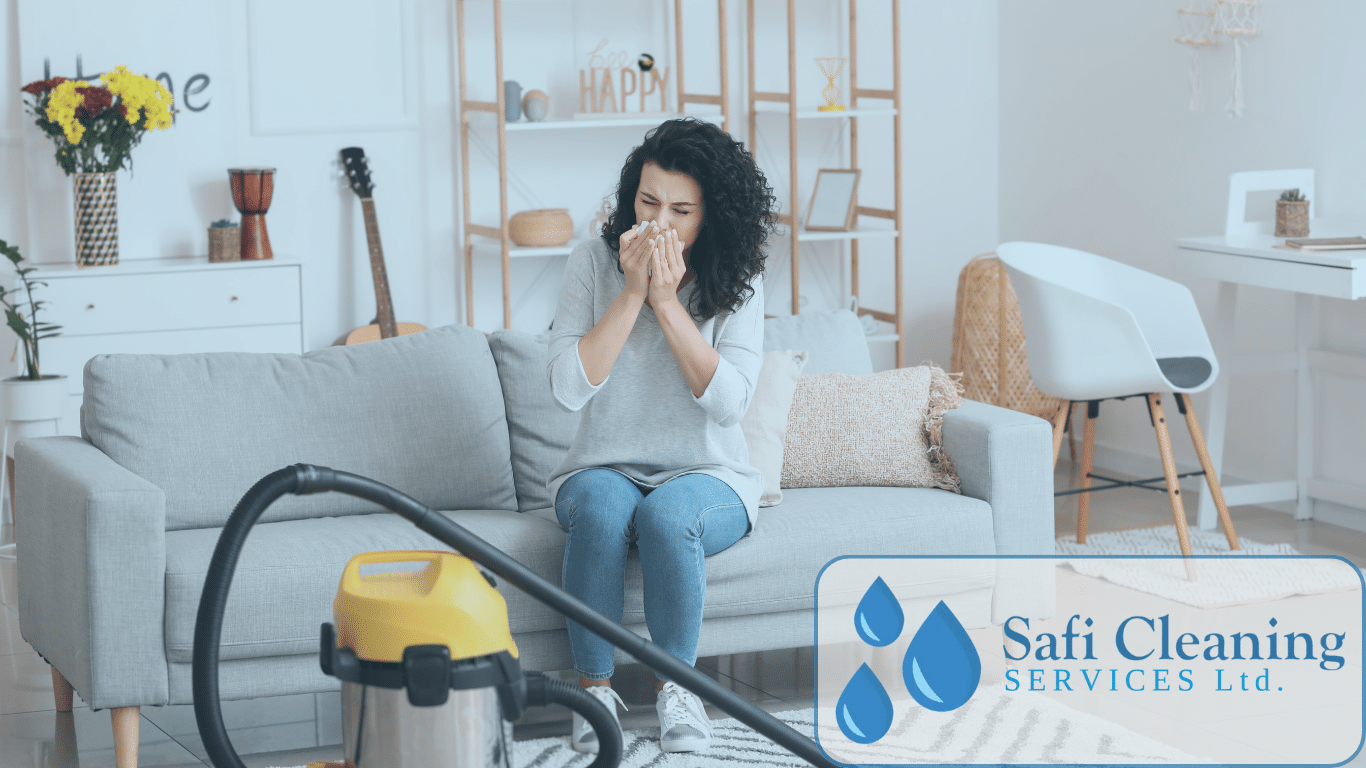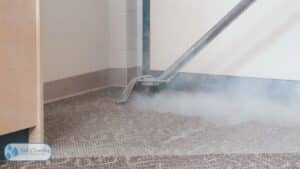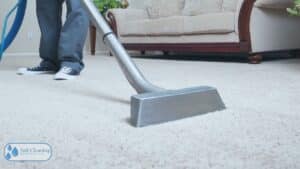Introduction
Allergies can make life miserable. Sneezing, coughing, itchy eyes, runny noses – it’s no fun dealing with these symptoms day after day. And for many allergy sufferers, the culprit is right in their own homes. Indoor allergens lurk in dust, pet dander, mould spores and more, triggering reactions in sensitive individuals. But the good news is that with diligent cleaning habits, you can dramatically cut down on allergens and find relief.
This blog post will explore the impact of indoor allergens and demonstrate how regular cleaning is essential for combatting them. We’ll identify common allergen hotspots, effective cleaning techniques, and ways to build a cleaning routine that tackles allergens for good. With some concerted effort, you can banish irritants from your home and make it a sanctuary for healthy breathing once again.
Many allergy sufferers experience symptoms year-round because the most common triggers are found inside homes. These include dust mites, pet dander, and mould. Regular cleaning is essential to removing these allergens from your living environment. Vacuuming carpets, dusting surfaces, washing bedding, and cleaning HVAC systems all help eliminate irritants. Developing consistent cleaning habits reduces your exposure and prevents allergens from accumulating. With diligent effort, you can make your home a safe haven once again.
What Are Allergens and How Do They Affect Us?
Allergens are substances that trigger an immune response in people who are sensitive to them. Common household allergens include:
- Dust mites – Tiny insects that live in bedding, carpets, furniture, and stuffed toys.
- Pet dander – Skin flakes shed by cats, dogs, rodents, and birds.
- Mold – Microscopic fungi that thrive in damp areas like bathrooms and basements.
- Pollen – Microscopic particles released by trees, grasses, and weeds.
When someone with allergies is exposed to an allergen, their immune system overreacts by producing antibodies called immunoglobulin E (IgE). These antibodies travel to cells that release chemicals, causing an allergic reaction. Symptoms may include:
- Sneezing, runny nose, and nasal congestion.
- Itchy, watery, and red eyes (allergic conjunctivitis).
- Wheezing, coughing, chest tightness, and shortness of breath.
- Itchy skin rashes like eczema.
- Anaphylaxis – a life-threatening reaction that can restrict breathing and cause a sudden drop in blood pressure.
Allergens trigger these uncomfortable and sometimes dangerous symptoms by causing inflammation in the eyes, nose, throat, lungs, and skin. That’s why it’s so important to control allergen exposure through regular cleaning and other preventative measures.
Dust Mites – A Common Culprit
Dust mites are a major contributor to allergies. These microscopic creatures feed on dead skin cells shed by people and pets. They thrive in soft furnishings like couches, beds, and stuffed animals where they can burrow deep into fibres.
Allergic reactions are triggered by inhaling dust mite faeces and body parts. Just a small amount can cause symptoms in sensitive individuals. Reducing dust mites is key for allergy relief.
Why Regular Cleaning is Essential for Allergy Sufferers
For those who suffer from allergies, having a clean home is crucial for managing symptoms and preventing flare-ups. Regular cleaning removes allergens like dust, pet dander, mould, and pollen that can accumulate in carpets, upholstery, bedding, and hard surfaces over time. Without regular cleaning, these allergens continue to circulate through the air and settle into soft furnishings, exacerbating allergy and asthma symptoms.
Studies show that thorough and frequent cleaning can significantly reduce allergen levels in the home. Vacuuming carpets once or twice a week can remove allergens like dust mites and pet dander before they are disturbed and become airborne. Washing bedding weekly in hot water is also recommended to kill dust mites. Dusting and cleaning hard surfaces with a damp cloth helps trap allergens rather than dispersing them into the air.
For allergy sufferers, implementing a regular cleaning routine can provide immense relief of symptoms like sneezing, coughing, congestion, rashes, and watery eyes. Keeping surfaces free of dust and other allergens improves indoor air quality and prevents the aggravation of respiratory conditions. With lower allergen levels, allergy medications can work more effectively. A clean home also improves sleep quality for those prone to nighttime allergy symptoms.
In addition to physical benefits, thorough cleaning improves mental health by reducing stress and anxiety in allergy sufferers. Knowing that your home is free of allergen triggers provides peace of mind. A clean and orderly environment also promotes a sense of well-being and comfort within your personal space.
The Role of Cleaning in Removing Allergens
Regular cleaning removes allergens through dusting, vacuuming, washing, and disinfecting surfaces. Dusting with a damp cloth traps dust and dander rather than dispersing it into the air. Vacuuming lifts allergens out of soft furnishings. Washing bedding and upholstered items in hot water kill dust mites. Disinfecting hard surfaces prevents mould and bacteria growth.
How Regular Cleaning Reduces Allergen Exposure
Without regular cleaning, allergens accumulate and circulate freely through the indoor environment. Frequent cleaning removes allergens before they have a chance to build up. Vacuuming twice a week and washing bedding weekly ensures allergen levels stay low. Sticking to a routine cleaning schedule reduces exposure to allergen triggers.
Benefits of an Allergen-Free Home
An allergen-free home provides immense benefits for allergy sufferers. Lower allergen levels mean fewer allergy flare-ups and less need for medication. Better air quality makes breathing easier and improves sleep. Mental health also benefits from the peace of mind of a clean home. Overall, a clean living space enhances comfort and quality of life.
Effective Cleaning Techniques to Combat Allergens
When it comes to keeping your home free of allergens, vacuuming should be a key part of your regular cleaning routine. Vacuuming lifts dust and allergens from surfaces like carpets, upholstery, and bare floors. Choosing the right vacuum is important, as some models have advanced filters to trap allergens and prevent them from being blown back into the air. Vacuuming once or twice per week can make a big difference in reducing allergen levels in your home.
Another important technique is dusting with a damp or treated cloth. Dry dusting can cause allergens to become airborne. Instead, use a microfiber cloth dampened with water or polish containing allergen-trapping ingredients. This allows you to remove dust and allergens from surfaces like shelves, blinds, and tabletops without kicking them up into the air you breathe. Dusting frequently will prevent layers of allergen-filled dust from accumulating.
Use HEPA Vacuums
Vacuums with HEPA (high-efficiency particulate air) filters are recommended by allergy specialists because they are proven to trap over 99% of dust and allergens. HEPA vacuums have extra fine filters that don’t allow allergens to pass through and re-circulate in the air. Look for the “Certified Asthma & Allergy Friendly” seal when shopping for a new vacuum.
Dust with Microfiber
Microfiber cloths are ideal for dusting because they attract and hold on to dust particles electrostatically. Dampening the cloth prevents allergens from dispersing. You can also use dusting tools treated with allergens trappers like olive oil or tea tree oil for added protection.
Ventilate Afterwards
After vacuuming or dusting, ventilate the area by opening windows or turning on fans. This allows any stirred up allergens to be carried outside rather than settling back onto surfaces. Leave the room for 30 minutes to an hour before going back in. Wearing an N95 mask while cleaning can also protect you from inhaling allergens.
Implementing these best practices for vacuuming and dusting will go a long way towards creating an allergen-free home environment. Be diligent and thorough when cleaning to remove allergens rather than spreading them around. With some strategic cleaning techniques, you can effectively combat allergens and find allergy relief.
Creating a Cleaning Routine for Allergy Relief
Developing a regular cleaning schedule is crucial for maintaining an allergen-free home. To start, make a list of allergy triggers specific to your household and note which areas tend to accumulate the most allergens. Bedrooms and living spaces with carpets, upholstered furniture, and stuffed animals may need more frequent attention, while kitchens and bathrooms with wipeable surfaces may require less. Aim to vacuum carpets and mop hard floors at least once or twice a week, and dust furniture, ceiling fans, and window treatments on a weekly or biweekly basis.
In addition to regular cleaning, also schedule seasonal deep cleans before times when allergies typically worsen. Do a thorough spring cleaning before tree pollen season, and purge dust-collecting clutter in the fall before cold and flu viruses spread. Washing bedding frequently in hot water also helps reduce allergens – try to wash sheets once a week and pillowcases twice a week during allergy season.
While diligent cleaning goes a long way, utilising professional services can provide an even deeper clean. Companies like Safi Cleaning Services use powerful HEPA vacuums and allergen-specific cleaning solutions that are more effective at removing allergens than typical household products. They clean in hard-to-reach places and can thoroughly sanitise upholstery, mattresses, carpets, and ductwork. The intensive cleaning they provide removes up to 99% of allergens, bringing long-lasting relief. Their staff is also specially trained in allergen removal techniques.
In summary, the combination of a regular cleaning routine and periodic deep cleaning by professionals gives allergy sufferers the best defence against problematic allergens. With some diligence and the right help, you can create an allergen-free oasis in your home.
Conclusion
In conclusion, regular and thorough cleaning is absolutely essential for allergy sufferers who want to reduce allergen exposure in their homes. As we have discussed, allergens like dust mites, pet dander, pollen, and mould spores can accumulate easily in carpets, upholstery, bedding, and other areas of the home. When inhaled, these allergens trigger uncomfortable and sometimes dangerous allergic reactions.
Implementing a regular cleaning routine is one of the most effective ways to combat allergens. Frequent vacuuming, dusting, and washing of bedding can dramatically cut down on allergen levels. It’s important to use the proper techniques, like damp dusting and vacuums with HEPA filters, to avoid kicking up allergens into the air. Deep cleaning problem areas like air ducts periodically are also recommended.
For those with severe allergies, bringing in professional cleaning services can provide added allergen removal. Companies like Safi Cleaning Services use powerful equipment and allergen-focused techniques to thoroughly rid homes of lurking allergens. Their expertise and diligence can reach places that regular homeowners may miss.
Don’t let allergies continue to plague you in your own home. Take control by implementing regular, thorough cleaning habits to dramatically improve your indoor air quality. With some diligence and the right techniques, you can combat allergens and finally breathe easy in your living space.
Key Takeaways
- Regular, thorough cleaning is essential for reducing allergen levels in the home
- Use proper techniques like vacuuming, dusting, washing bedding to remove allergens
- Consider hiring professional cleaning services for optimal allergen removal
Call to Action
Allergy sufferers, take control of your indoor environment! Implement a regular cleaning routine using the proper techniques discussed here. For optimal results, contact Safi Cleaning Services today to schedule a deep clean of your home.




